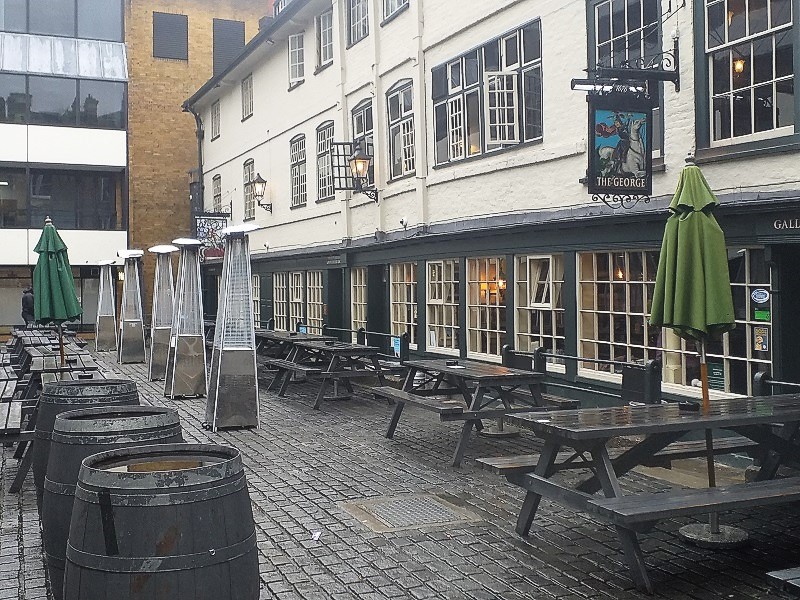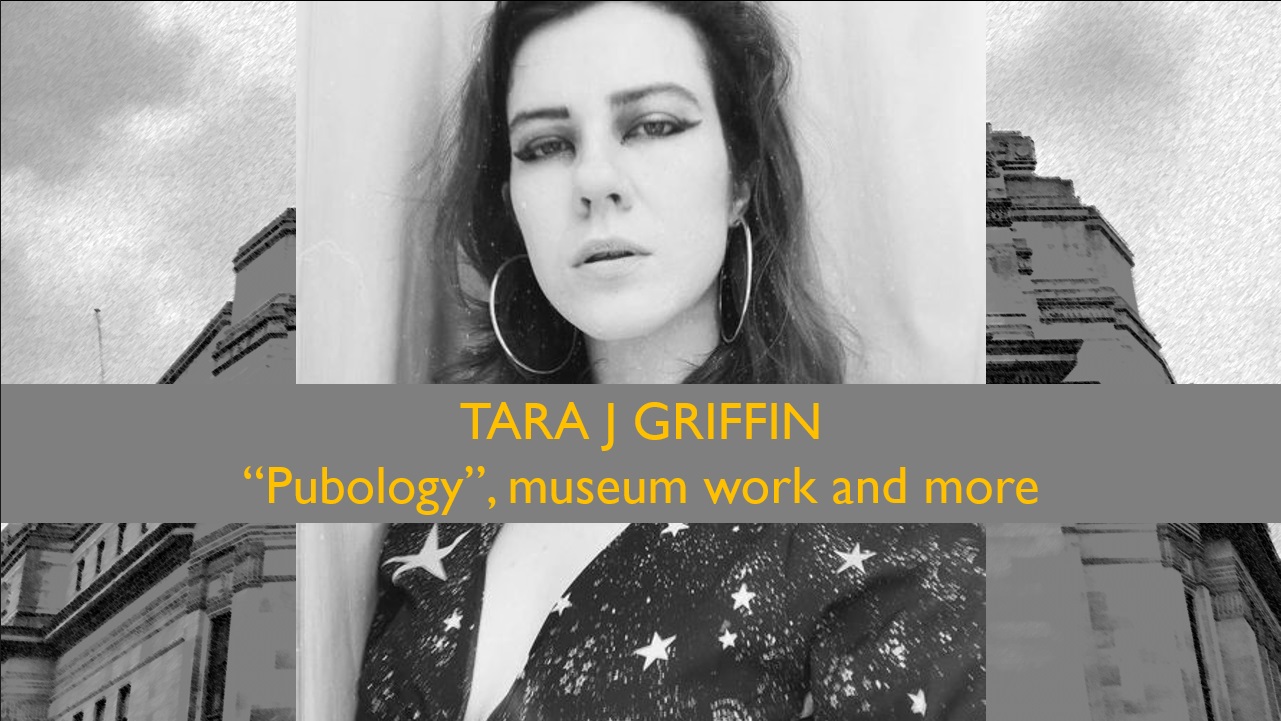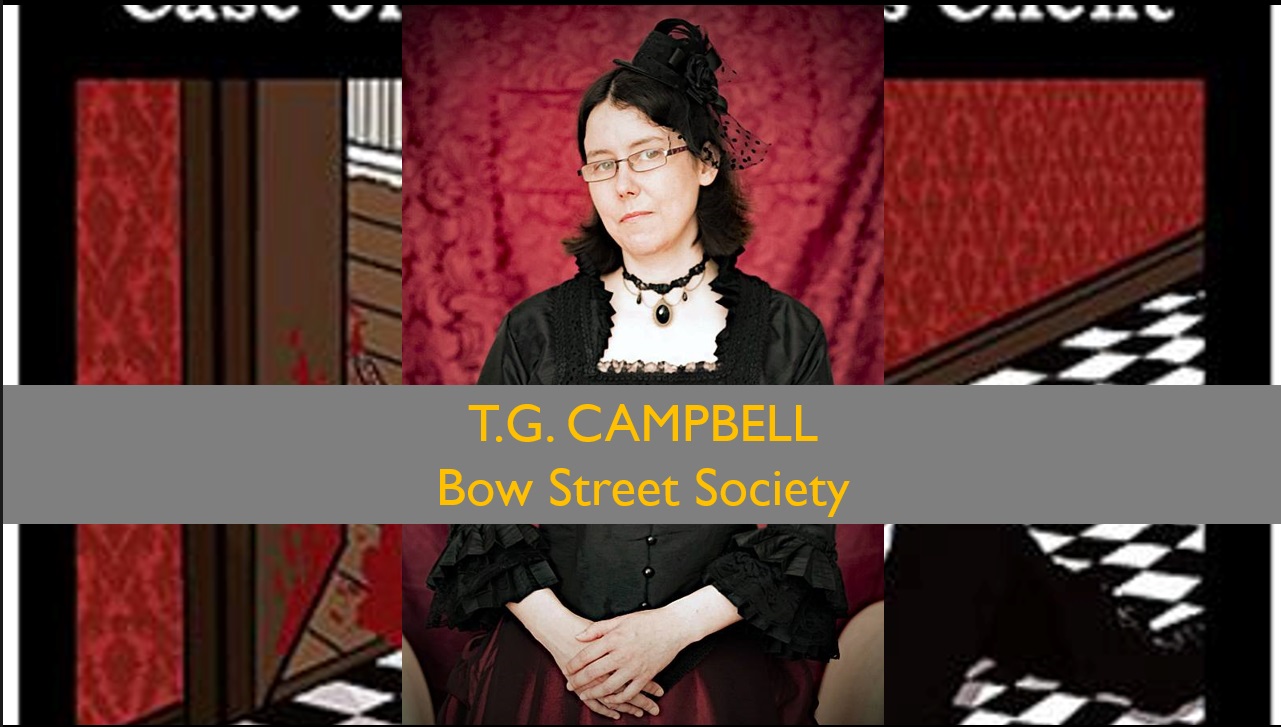In the winter 2022 edition of The Dickensian (No. 518, Vol. 118, Part 3, ISSN 0012-2440), published by The Dickens Fellowship, you can find my review of Majestica’s album A Christmas Carol (Nuclear Blast, 2020).
You can read the full article in The Dickensian, available via the fellowship’s website.
However, I will not reprint the essay here. As I had hoped to have the article published around Christmas (since it deals with A Christmas Carol), I prepared this little blog about some A Christmas Carol locations in London. The Dickensian only arrived last week and now it is March, but still, I would like to introduce to you some locations connected to Charles Dickens’s A Christmas Carol. They can be found in the heart of the old City of London around the area of Lombard Street.
In the Majestica essay, I quote two of my friend’s works – David Charnick’s Scrooge’s Lonely Rooms blog and Richard Jones‘ book Walking Dickensian London. Both authors and sources have been resources for my own little blog about the locations of A Christmas Carol. A huge thanks to both of you. Also, if you are interested in a proper self-guided A Christmas Carol London walk, you can find it here:
Now, without further ado, let us carry on.
Here are some London locations from Charles Dickens’s
A Christmas Carol (and how to find them)!
The first location is in Gracechurch Street, the building on the corner with Lombard Street. The nearest tube station is Monument Station. From there, it is a two minute walk up Gracechurch Street.

35 Gracechurch Street
The apparition of the ghost of Jacob Marley, Ebenezer Scrooge’s dead business partner, is one of the most famous scenes from A Christmas Carol. Scrooge sits in his lonely rooms and all of a sudden, the bell in the house begins to ring. To understand Ebenezer Scrooge’s sense of loneliness and isolation on Christmas Eve and how terrified he must have been by the sound of the bell, we must take a look at the peculiarities of office space provision in Victorian London.
Scrooge lives in an otherwise empty house, ‘all the other rooms in the house are counting houses, none of which are occupied on that dark evening on Christmas Eve’ (Charnick 2017). The reason is that by 1843, the year Dickens wrote and published A Christmas Carol, businesses had rooms in domestic houses or were carried out for example in coffee houses. So Scrooge knows that he is all alone and that adds to his vulnerability in the scene.
The building on the street corner is 35, Gracechurch Street, the headquarters of the City Offices Company Ltd, established in 1864 and one of the first companies ‘which initiated the speculative development of office buildings. For the first time, office buildings were erected to be rented out to tenants. […] Over its main entrance on Lombard Street is a bold representation of the head of Mercury, messenger of the gods and the Roman god of commerce and profitable trade’ (Charnick 2017).
Follow Lombard Street and before the church of St Edmund King and Martyr, turn right into George Yard. Cross the yard and enter St Michael’s Alley through the little passageway by the George & Vulture on your left.
St Michael’s Alley and Bengal Court

St Michael’s Alley is in front of you and Bengal Court to the left. These were ordinary streets in medieval London and were spared rebuilding after the Great Fire in 1666 and spared Victorian development.
This is the maze of alleyways where Dickens placed the counting house of A Christmas Carol’s Ebenezer Scrooge and also his home, his lonely rooms in the otherwise empty house.
Dickens does not name a street for Scrooge’s home, but the narrow Bengal Court gives you an idea of how it must have felt and looked like. Scrooge took over the rooms from his deceased partner Jacob Marley in a big, but otherwise empty house, because the rest of it was used as counting houses and, obviously, they are closed on Christmas Eve! It is quiet and dark and when Scrooge arrives, the knocker suddenly transforms into the face of his dead business partner Jacob Marley. Scrooge even checks the backside of the door to see if the rest of Marley’s head is sticking out there.
Scrooge goes up the stairs, enters his rooms, locks himself in, has a little supper and while sitting in an armchair, he notices the little bell that has been disused for so long.

It was with great astonishment, and with a strange, inexplicable dread, that as he looked, he saw this bell begin to swing. It swung so softly in the outset that it scarcely made a sound; but soon it rang out loudly, and so did every bell in the house. This might have lasted half a minute, or a minute, but it seemed an hour. The bells ceased as they had begun, together. They were succeeded by a clanking noise, deep down below; as if some person were dragging a heavy chain over the casks in the wine-merchant’s cellar.
Scrooge then remembered to have heard that ghosts in haunted houses were described as dragging chains.
The cellar-door flew open with a booming sound, and then he heard the noise much louder, on the floors below; then coming up the stairs; then coming straight towards his door.
“It’s humbug still!” said Scrooge. “I won’t believe it.”
His colour changed though, when, without a pause, it came on through the heavy door, and passed into the room before his eyes. Upon its coming in, the dying flame leaped up, as though it cried, “I know him; Marley’s Ghost!” and fell again.
Leave Bengal Court, follow St Michael’s Alley (not towards the Jamaica Wine House, but along the fence of the church of St Michael, Cornhill). Ascend and descend the stairs at its end, turn immediately left into Corbet Court and follow it. You see the church of St-Peter-upon-Cornhill. Turn right and follow St Peter’s Alley along the fence of the churchyard to the gate that leads into it. Enter the churchyard.
St-Peter-Upon-Cornhill

The churchyard of St-Peter-upon-Cornhill was disused and derelict burial ground when Dickens wrote A Christmas Carol. If you stand in the churchyard, you will find its ground above street level because of the increasing number of burials in the 19th century due to an ever-growing and overcrowded city. The churchyards in London were becoming unhealthily overcrowded themselves; to make space for the increasing number of dead bodies, old graves were opened up, gravestones removed, the coffins and its contents pushed and jumped upon and often crushed and then covered with soil and new coffins were put upon them.
Obviously, this was only a temporary solution. Also, gravedigging became a popular and profitable activity for many gangs during that time. If you want to listen to the history of the grave-diggers, here is my 2021 interview with London tour guide Jack Chesher of ‘Living London History’ about them.
The problem was only solved after several burial acts were passed, forbidding burials in the City and central London, but instead moving them to the surrounding areas (which led to the building of the ‘Magnificent Seven’).
A similarly eerie scene to the appearance of Marley’s ghost is the scene where the Ghost of Christmas Yet to Come leads Scrooge to the graveyard, their final stop:
A churchyard. Here, then; the wretched man whose name he had now to learn, lay underneath the ground. It was a worthy place. Walled in by houses; overrun by grass and weeds, the growth of vegetation’s death, not life; choked up with too much burying; fat with repleted appetite. A worthy place!
The churchyard of St-Peter-upon-Cornhill is a fitting location similar to the churchyard mentioned above; it can very well be the same one, where Scrooge discovers his own grave.
The end
You can leave the churchyard and backtrack along St Peter’s Alley. If you want to leave the area, turn right and follow St Peter’s Alley to Cornhill (where Bob Cratchit slid down ‘twenty times, in honour of its being Christmas Eve’). Turn left and follow it until you arrive at the Royal Exchange and Bank Underground Station.
If you wish to finish this little walk at a pub in a location fitting the area (you are close to Threadneedle Street and the Bank of England), my advise would be ‘The Crosse Keys’ on Gracechurch Street. To get there, go back the way you came through Corbet Court. Ascend and descend the stairs to St Michael’s Alley and following the fence, pay attention to the brown door on the building on your left. This is the back entrance to the pub; enter and you will find a magnificent public house built in the former bank of Hong Kong and Shanghai.
You can reach the front entrance when instead of going back via the stairs, go to Corbet Court and then turn left and follow it (passing the oldest Mercers Maiden monument in London) to Gracechurch Street. The ‘The Crosse Keys’ is on your right.
He became as good a friend, as good a master, and as good a man, as the good old city knew, or any other good old city, town, or borough, in the good old world. Some people laughed to see the alteration in him, but he let them laugh, and little heeded them; for he was wise enough to know that nothing ever happened on this globe, for good, at which some people did not have their fill of laughter in the outset; and knowing that such as these would be blind anyway, he thought it quite as well that they should wrinkle up their eyes in grins, as have the malady in less attractive forms. His own heart laughed: and that was quite enough for him.
Thank you!
I hope you enjoyed this little walk to some London locations of Charles Dickens’s A Christmas Carol. If you are interested in a proper self-guided A Christmas Carol London walk, you can find it here:
Thank you very much!
Title photo: The George, Borough
All photographs by Philipp Röttgers, except ‘Marley’s Ghost’ by Wikimedia Commons




